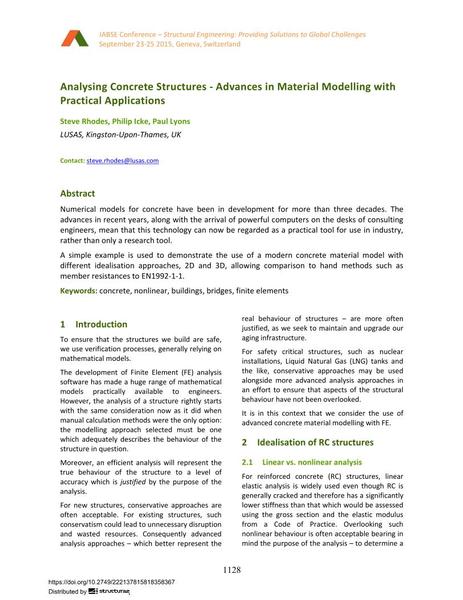Analysing Concrete Structures - Advances in Material Modelling with Practical Applications

|
|
|||||||||||
Détails bibliographiques
| Auteur(s): |
Steve Rhodes
(LUSAS, Kingston-Upon-Thames, UK)
Philip Icke (LUSAS, Kingston-Upon-Thames, UK) Paul Lyons (LUSAS, Kingston-Upon-Thames, UK) |
||||
|---|---|---|---|---|---|
| Médium: | papier de conférence | ||||
| Langue(s): | anglais | ||||
| Conférence: | IABSE Conference: Structural Engineering: Providing Solutions to Global Challenges, Geneva, Switzerland, September 2015 | ||||
| Publié dans: | IABSE Conference Geneva 2015 | ||||
|
|||||
| Page(s): | 1128-1136 | ||||
| Nombre total de pages (du PDF): | 9 | ||||
| Année: | 2015 | ||||
| DOI: | 10.2749/222137815818358367 | ||||
| Abstrait: |
Numerical models for concrete have been in development for more than three decades. The advances in recent years, along with the arrival of powerful computers on the desks of consulting engineers, mean that this technology can now be regarded as a practical tool for use in industry, rather than only a research tool. A simple example is used to demonstrate the use of a modern concrete material model with different idealisation approaches, 2D and 3D, allowing comparison to hand methods such as member resistances to EN1992-1-1. |
||||
| Mots-clé: |
béton ponts bâtiment
|
||||
